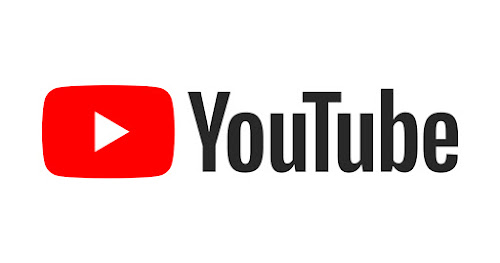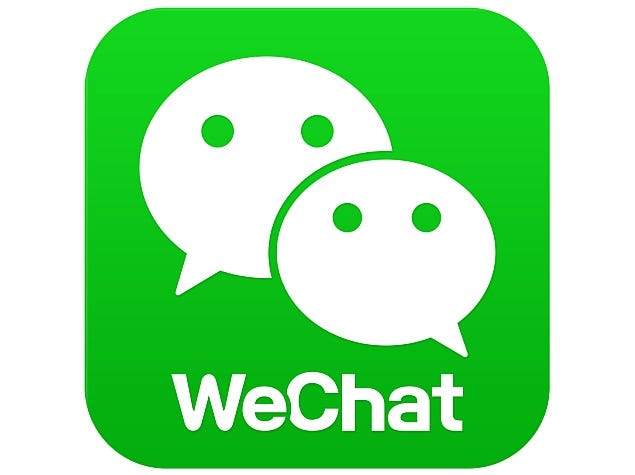The Top 10 Most Popular Social Media Platforms in the World 2025
By ICON TEAM | Published on Feb 23, 2025
List Of Top 10 Most Popular Social Media Platforms in the World for 2025
Social media has become an essential aspect of everyday life, influencing how people connect, communicate, and consume material around the world. In 2025, billions of people will use platforms with a wide range of features, including video sharing, instant messaging, professional networking, and artistic expression. To remain competitive, these platforms have developed beyond their original functions by incorporating modern technology such as AI, augmented reality, and e-commerce.
1. Facebook:

Founded in 2004 by Mark Zuckerberg and his college roommates in a Harvard dorm, Facebook has evolved to become the world's largest social networking platform, with over 3 billion monthly active users by 2025. Facebook is now a key component of Meta's ecosystem, connecting people through posts, stories, groups, and marketplace features, making it a dynamic hub for both personal and corporate connections. Its algorithm-driven newsfeed prioritizes content based on user participation, and powerful advertising features enable marketers to reach large, targeted audiences. Despite privacy issues like Cambridge Analytica, Facebook's huge reach and ongoing innovation, such as incorporating virtual reality into Meta's bigger vision—keep it dominating. From small company pages to global communities, its adaptability guarantees that it continues to be a popular medium for people of all ages.
2. Instagram:

Instagram, founded in 2010 by Kevin Systrom and Mike Krieger, has grown from a simple photo-sharing app to a visual behemoth, with over 2 billion monthly active users in 2025. Instagram, acquired by Meta in 2012, thrives on its visual focus, with features like as Stories, Reels, and IGTV catering to short-form video trends. Its appeal stems from its influencer-driven culture and shoppable posts, which have propelled it to the top of the social commerce rankings—more than 130 million users tap shopping posts every month. Instagram's filters, hashtags, and explore page are popular among younger groups, particularly those aged 18 to 34. The platform's flawless connection with Facebook's advertising infrastructure strengthens its position as a must-have for businesses and creators.
3. Snapchat:

Snapchat, founded in 2011 by Evan Spiegel, Bobby Murphy, and Reggie Brown, transformed social media with its ephemeral messaging, in which content disappears after viewing. Snapchat continues to be a favorite among Gen Z, with 90% of 13-24-year-olds in over 20 countries using it on a daily basis. Its entertaining features (lenses, filters, and Snap Streaks) encourage frequent involvement, while Snap Map and Spotlight are designed for location-based sharing and short-form video. Brands use Snapchat's AR features and geofilters for immersive advertising, particularly in beauty and entertainment. Despite competition from TikTok, Snapchat's emphasis on anonymity and real-time communication remains it a dynamic, youth-focused platform.
4. TikTok:

ByteDance released TikTok in 2017, and it has taken the world by storm, with approximately 1.7 billion monthly active users in 2025. TikTok is well-known for its addicting short-form films, which range from 15 seconds to 10 minutes, and its algorithm excels at delivering personalized content, making it a fertile ground for viral trends. Its extensive library of music snippets, filters, and effects enables producers, particularly those aged 10 to 29, who make up the majority of its user base. Despite geopolitical hurdles, such as attempted bans in some countries, TikTok's combination of e-commerce and live broadcasting has increased its popularity. From dance challenges to instructional content, its cultural significance and quick growth solidify its status as a global phenomenon.
5. YouTube:

YouTube, founded in 2005 by Steve Chen, Chad Hurley, and Jawed Karim, remains a dominant force, with over 2.5 billion monthly active users in 2025. It was acquired by Google in 2006 and is now the world's second-largest search engine, providing everything from tutorials to entertainment through long-form and short-form videos (YouTube Shorts). Creators make money through adverts, memberships, and Super Chats, while users spend an average of 28 hours per month on the platform. Its global reach—spanning more than 100 languages—and diverse content, ranging from music videos to vlogs, make it indispensable. YouTube's investment in AI-driven recommendations and live streaming will strengthen its position as the go-to platform for video consumption and creation in 2025.
6. WhatsApp:
WhatsApp, created in 2009 by Jan Koum and Brian Acton, has grown into a messaging behemoth with 2 billion monthly active users in 2025. It was acquired by Meta in 2014 and is a go-to for secure, end-to-end encrypted communication, with free text, phone, and video chats. WhatsApp is popular in countries such as India and Brazil, and its simplicity and dependability appeal to people of all ages, with users opening it over 930 times every month. Its WhatsApp Business program allows businesses to communicate with clients through automated responses and catalogs, expanding its utility beyond personal use. In 2025, its commitment on privacy and cross-platform capability will keep it at the forefront of global messaging.
7. WeChat:

Tencent's WeChat, which began in 2011 in China, is more than just a social network; it's a "super app" with 1.3 billion monthly active users by 2025. Originally a messaging service, it now includes payments (WeChat Pay), e-commerce, and mini-programs, making it a daily necessity for Chinese users. Its social features include Moments (a feed for sharing updates), group chats, and voice messaging, and its closed ecosystem enables seamless connection with local services. WeChat's income, which exceeds $16 billion yearly, illustrates its diverse nature. In 2025, its dominance in China and expanding impact among the diaspora will emphasize its distinct blend of social and lifestyle functions.
8. Telegram:

Created in 2013 by Nikolai and Pavel Durov, is expected to reach 800 million monthly active users in 2025, thanks to its focus on privacy and security. It provides end-to-end encrypted chats, self-destructing communications, and large group capacities (up to 200,000 people), making it a shelter for those seeking privacy. Telegram, based in Dubai, uses a cloud-based technology to provide speed and accessibility across all devices. Popular in Russia and Iran, it also serves as a hub for public channels that broadcast news and updates. In 2025, its censorship resistance and minimal moderation will remain it a controversial but quickly growing platform.
9. Facebook Messenger:
Facebook Messenger, which was split out from Facebook in 2011, is projected to have over 931 million monthly active users by 2025. Meta's separate messaging arm provides text, voice, and video communications, as well as entertaining extras like stickers and GIFs. Its link with Facebook's ecosystem enables cross-platform communication, while over 10 million chatbots simplify corporate contacts. Messenger's 50% increase in voice and video calls since 2020 demonstrates its importance in remote connectivity. In 2025, its tailored engagement tools—such as automatic responses and unique offers—will make it an essential conduit for marketers to connect directly with consumers.
10. LinkedIn:

LinkedIn, founded in 2003 by Reid Hoffman and later acquired by Microsoft in 2016, stands out as the leading professional networking site, with over 1 billion monthly active members in 2025. It connects job seekers, recruiters, and businesses via profiles, posts, and groups, with the goal of advancing their careers. Its services, such as LinkedIn Learning and job ads, are geared toward professionals aged 25 to 34, who make up the majority of its audience. LinkedIn's focus on thought leadership through articles and live events, combined with its B2B advertising tools, will make it indispensable for corporate networking and personal branding in a competitive digital economy.
Comments 0